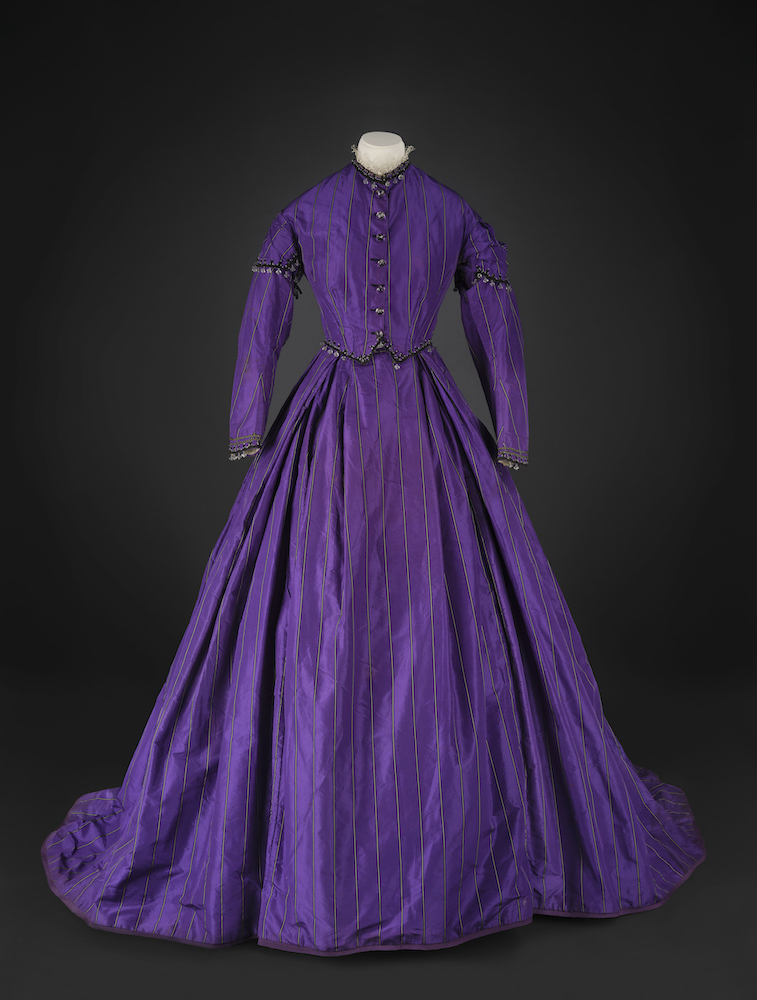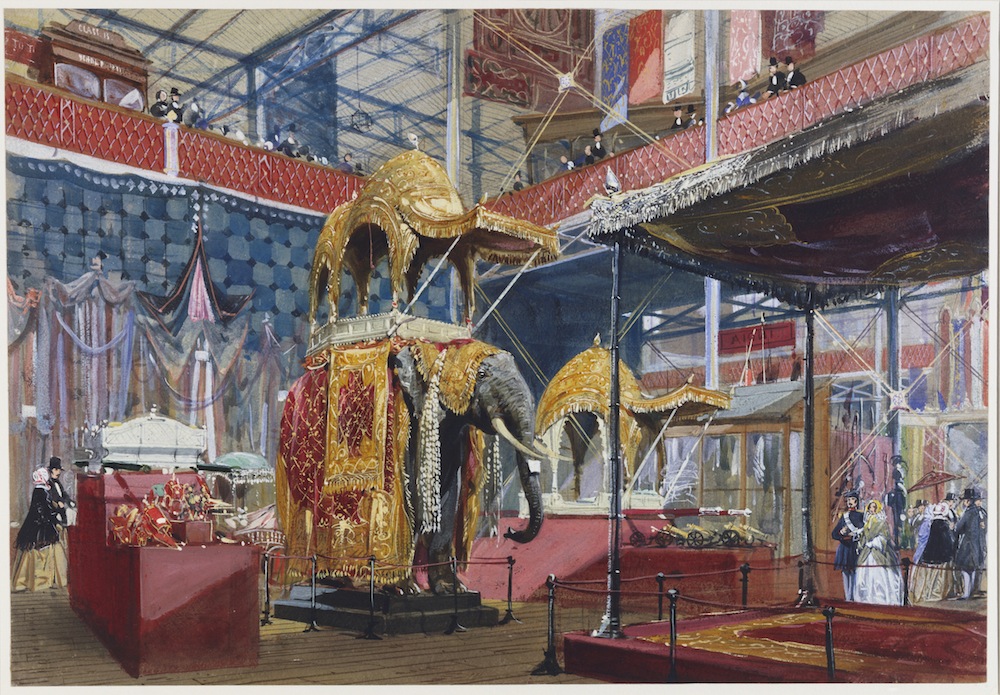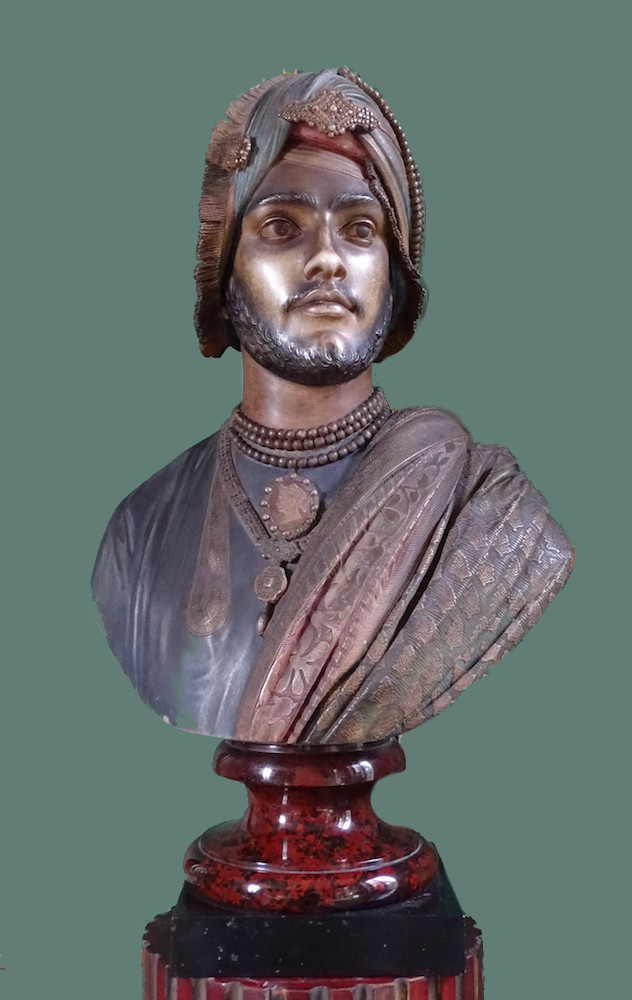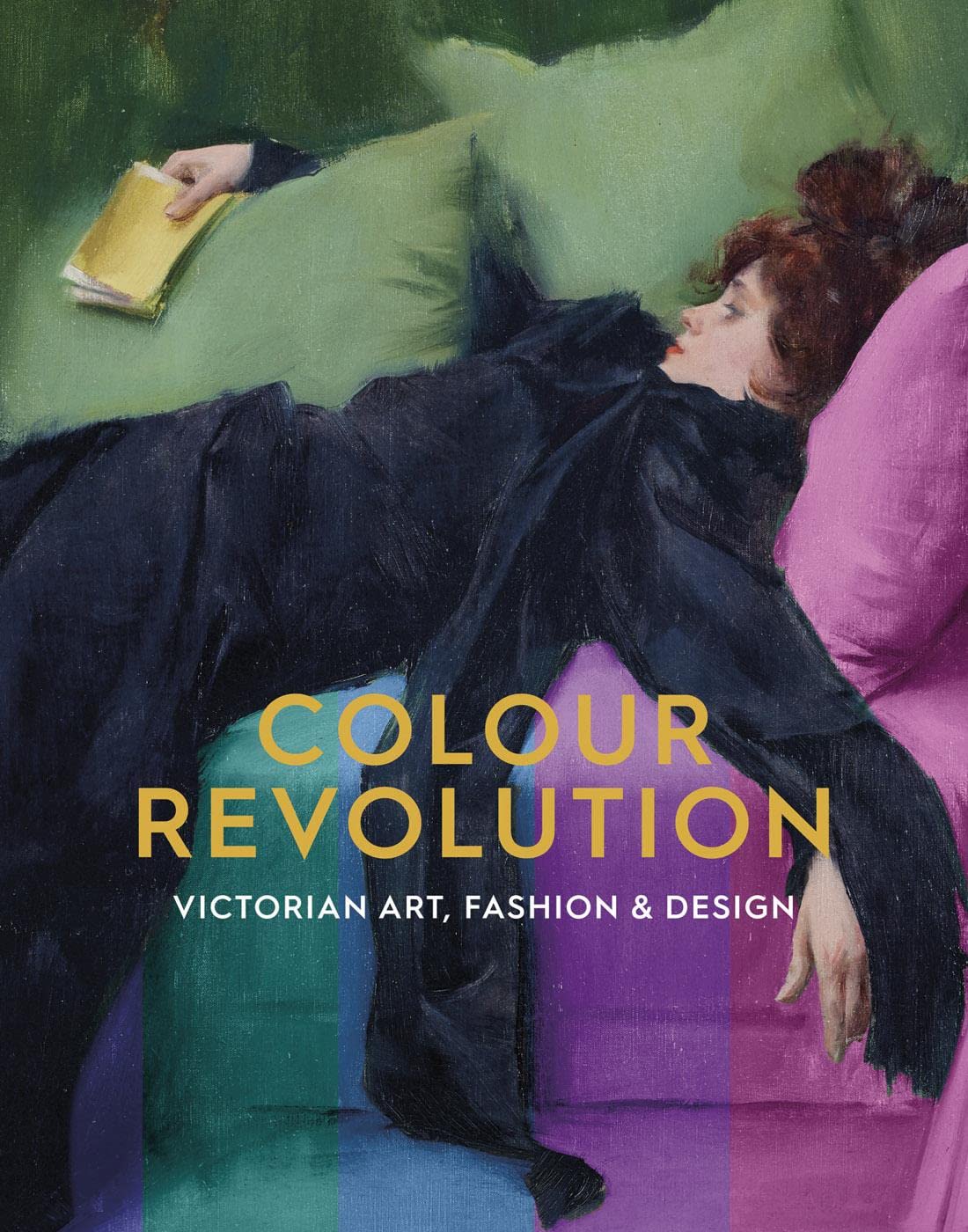Click on all the images to enlarge them, and for more information where available. Links will also take you to information elsewhere on our website.


Left: John Ruskin's Study of a Kingfisher, with dominant Reference to Colour (c.1871). Right: JWM Turner's Venice, from the Porch of Madonna della Salute (c. 1835).
After the plain, completely black mourning dress of Queen Victoria displayed at the entrance of the exhibition, there is light and colour in abundance as we move to works by John Ruskin whose paintings sit appropriately alongside those of his hero, the painter of light, J. M. W. Turner, to whom he dedicated Modern Painters. Ruskin’s magnificent Study of a Kingfisher, with dominant Reference to Colour (1871), the illustration chosen for the cover of The Cambridge Companion to John Ruskin (2015), vies with Turner’s watercolour Venice: The Grand Canal (1840) and his oil on canvas Venice, from the Porch of Madonna della Salute (c. 1835), the latter on loan from The Metropolitan Museum of Art, New York. The famous Portrait of John Ruskin at Glenfinlas (1853-54) by John Everett Millais in which the sitter (or in this case the "stander") is so inappropriately dressed for the occasion, reminds us of the context and of the approaching crisis in Ruskin’s personal life and his wife’s subsequent marriage to Millais. We return to this portrait at the end of the exhibition where it is visible in a photograph taken by Sarah Angelina Acland, in her home in Oxford. Sarah was the daughter of physician Henry Acland, Ruskin’s close friend to whom the portrait had been given.



Left to right: a) British mourning dress originally worn by Queen Victoria, 1894-95. b) Day Dress (credit: Manchester Art Gallery). (c) One of the Yellow Books.
This polychromatic exhibition has an intimacy created by the different alcoves of varying hues, often separated by transparent veils or curtains which endow it with a sense of mystery. One of my favourites was the purple alcove, highlighting a hue made possible by the synthetic production of violet dye from coal tar, with potentially dangerous effects: a long vivid purple day dress of aniline dyed silk worn by Mary Eleanor Cuncliffe (1846-1896) next to a glass display case with more purple accoutrements – crinoline, stockings, and parasol. Another impressive gown in the green, gold, and purple range is the richly decorated Queen Zenobia dress by the House of Worth, Paris, worn by the Duchess of Devonshire at a Ball in 1897. It must have taxed the strength of the Duchess simply to wear such apparel, let along dance the polka in it! This exploration of colour, its use and significance in various domains continues – yellow as on the covers of The Yellow Books, green and its association with homosexuality according to the exhibition curators, and magenta.

Nocturne: Blue and Gold, St Mark’s Venice (1880), Amueddfa Cymru (National Museum of Wales, by kind permission; right click disabled, not to be reproduced).
What a treat to find four paintings by James McNeill Whistler (1834-1903) demonstrating the palette encompassing yellow, blue, gold, pink and green: The Yellow Room; Nocturne: Blue and Gold, St Mark’s Venice (1880); Three Figures: Pink and Grey; Dancing Woman in a Pink Robe. Pause in front of the Nocturne depicting in the distance St Mark’s Basilica and admire not only the composition but the fine Whistler frame which contains it. This painting belonged to Gwendoline Davies, one of the famous Davies sisters, Welsh philanthropists, and art collectors. Gwendoline Davies bequeathed this Nocturne on her death in 1951 to the National Museum of Wales. This is not the famous Nocturne in Black and Gold, The Falling Rocket that was at the centre of controversy at the libel case of November 1878, brought against Whistler by Ruskin in a fit of temper. Ruskin wrote in Fors Clavigera: “I have seen, and heard, much of Cockney impudence before now, but never expected to hear a coxcomb ask two hundred guineas for flinging a pot of paint in the public’s face.” Whistler sued the critic for libel. Whistler’s memorable line of defence was that he asked the price of two hundred guineas, a labour of two days, “for the knowledge I have gained in the work of a lifetime.” Although the jury declared a verdict in Whistler’s favour, he was awarded only a farthing in damages. One might be tempted to apply the “pot of paint” theory to Ruskin’s Study of Dawn: Purple Clouds (1868). It was Marcel Proust, translator of two works by Ruskin, who recognised that the two men were not so far apart in their reasoning. Ruskin’s presence hovers over this exhibition in so many ways!
Colour Revolution is partly an exhibition within at least two exhibitions, for the inspiration for some of the material is the Great International Exhibition of 1862 held in South Kensington, London, about which Matthew Winterbottom contributes an illuminating chapter in the accompanying catalogue. The sense of experiencing the Great International Exhibition is felt on several occasions, not least in the design of one of the large alcoves with remnants of the decorated supports placed high up in the ceiling, in the positioning of Minton’s colourful Majolica Fountain as the centrepiece (not forgetting his fascinating and equally colourful Majolica peacock of 1873 and the peacock wallpaper used as a backcloth).


The magnificent Indian Court at the Great Exhibition of 1851 depicted a spectrum of very bright colours used particularly in textiles, such as a shawl in wool and silk presented to Queen Victoria. Of particular interest is the bust of Duleep Singh (1838-1893), a deposed Maharajah who lived in Britain since 1853 and whom Queen Victoria found “extremely handsome.” She commissioned a bust of Singh in 1856 for Prince Albert’s 37th birthday. The sculptor was Italian-born Baron Pietro Carlo Giovanni Battista Marochetti (1805-circa 1867). He produced an attractive version with the subdued shades of blue, gold and brown. Singh’s head is turned to the side, avoiding a direct gaze. He is wearing a decorative, peaked turban, and the upper part of his draped garments, adorned with jewels, can be glimpsed. Unfortunately, Queen Victoria did not like the coloured bust, and it was replaced by a white marble one. This is a rare opportunity to see this polychrome bust loaned to the exhibition from a private collection.
Echoes of the impact of the medieval world that so greatly appealed to Edward Burne-Jones, William Morris, John Ruskin and others can be found in the stained-glass panel by Burne-Jones for Morris & Co, representing an Angel with Lute (1873-1875), one of two panels on the same theme originally from the Haweis Chapel in the former St James’s Church, Marylebone, London, on loan from The Whitworth, University of Manchester. St James’s Church, in Westmoreland Street, containing some fine Burne-Jones windows, was demolished in the early twentieth century.
Colour Revolution: Victorian Art, Fashion and Design is an elegant show, uncluttered, with items well lit, well displayed and artfully separated. There is a sense of space, tranquillity, and leisure. There is something for everybody in these eclectic displays: for those who are interested in fashion, colour techniques, sculpture, painting, gadgets, jewellery, photography, music hall posters, and those simply seeking pleasure and Art for Art’s Sake! I experienced a feeling of exhilaration and immense enjoyment. It was the most memorable exhibition I have seen for many years.
Postscript on the catalogue

My pleasure after visiting the exhibition was greatly decreased on reading the eponymous catalogue that a friend kindly purchased for me, knowing that I wished to focus on and explore the exhibits in greater detail, at leisure. My major disappointment is that it is not a catalogue, although it is described as such in the Introduction and elsewhere. It is more a collection of essays, some very short, on various themes. Although richly illustrated, many of the illustrations are not those of the exhibits, but there is no way of knowing, for the numbers of the figures do not correspond to a list of numbered exhibits at the end of the book. My major criticism is that there is no index, a sine qua non of any academic book and absolutely indispensable for a catalogue. Unfortunately, wokism (or shall I say wokery) has seeped into the catalogue in which a trigger warning has been deemed necessary at the heading of one chapter. The Horizon programme of the European Commission funded much of this project. Surely the prestigious Ashmolean Museum, to which Ruskin generously donated much material, could have produced a better catalogue for scholarly research purposes? Thank goodness the exhibition transcended the publication!
Links to Related Material
- Polychromy in the work of Baron Carlo Marochetti (1805-1867): Part I
- The Colour of Anxiety: Race, Sexuality and Disorder in Victorian Sculpture (another exhibition review)
- Sir William Henry Perkin and the Coal-Tar Colours
- Dangerous to their health — a review of Alison Matthews David’s Fashion Victims: The Dangers of Dress Past and Present
Bibliography
Ribeyrol, Charlotte, Matthew Winterbottom and Madeline Hewitson, eds. Colour Revolution: Victorian Art, Fashion & Design. Ed. Pbk. Oxford: Ashmolean, 2023. 256 pages. ISBN 978-1910807576 £25.00
Created 20 October 2023